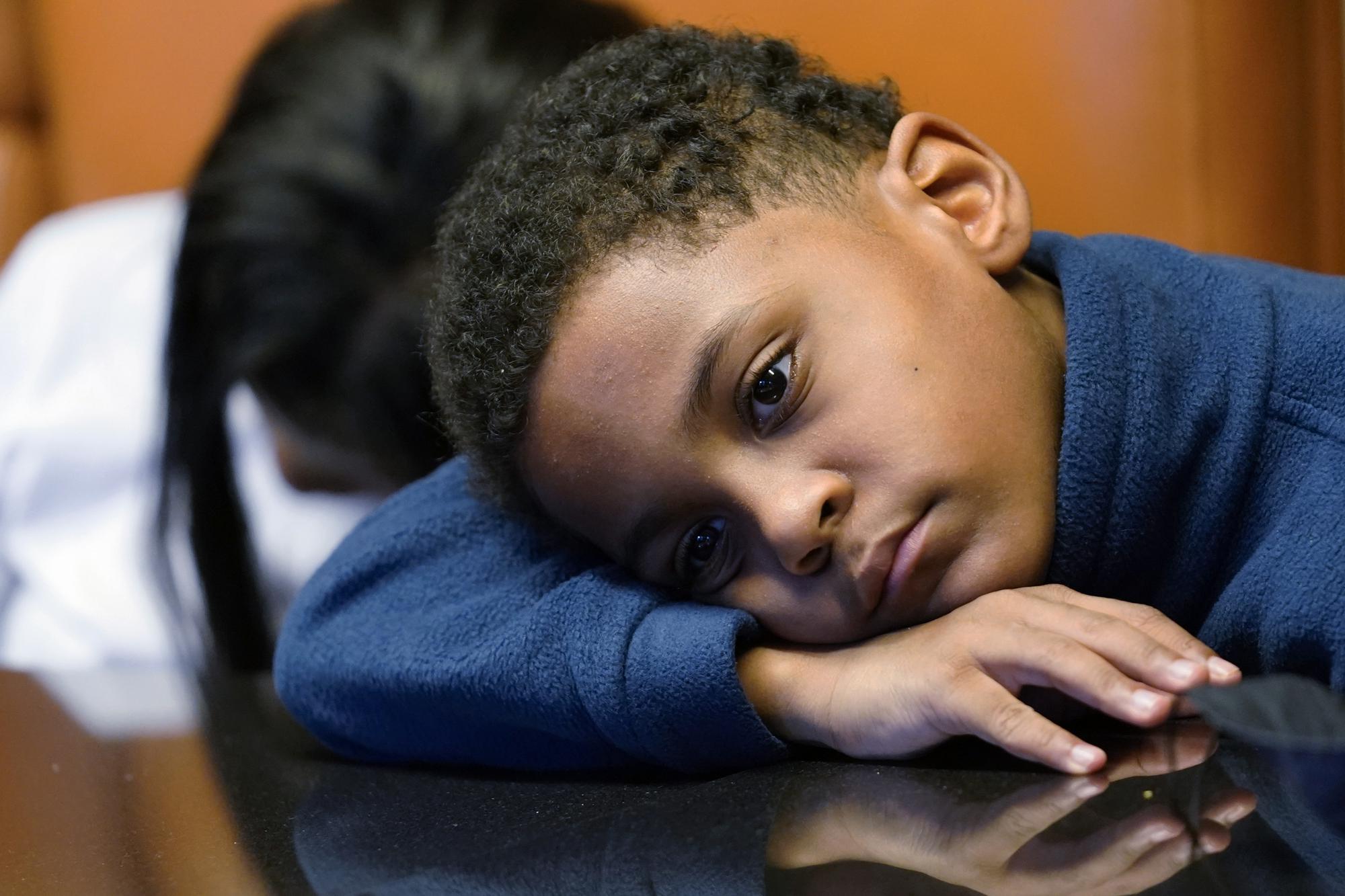World
Tiny Wrists In Handcuffs: How US police use force against children

Royal Smart remembers every detail: the feeling of the handcuffs on his wrists. The panic as he was led outside into the cold March darkness, arms raised, to face a wall of police officers pointing their guns.
He was 8 years old.
Neither he nor anyone else at his family’s home on Chicago’s South Side was arrested on that night two years ago, and police wielding a warrant to look for illegal weapons found none. But even now, in nightmares and in waking moments, he is tormented by visions of officers bursting through houses and tearing rooms apart, ordering people to lie down on the floor.
“I can’t go to sleep,” he said. “I keep thinking about the police coming.”
Children like Royal were not the focus after George Floyd died at the hands of police in 2020, prompting a raging debate on the disproportionate use of force by law enforcement, especially on adults of colour.
Kids are still an afterthought in reforms championed by lawmakers and pushed by police departments. But in case after case, an Associated Press investigation has found that children as young as 6 have been treated harshly — even brutally — by officers of the law.
They have been handcuffed, felled by stun guns, taken down and pinned to the ground by officers often far larger than they were. Departments nationwide have few or no guardrails to prevent such incidents.
The AP analyzed data on approximately 3,000 instances of police use of force against children under 16 over the past 11 years. The data, provided to the AP by Accountable Now, a project of The Leadership Conference Education Fund aiming to create a comprehensive use-of-force database, includes incidents from 25 police departments in 17 states.
It’s a small representation of the 18,000 overall police agencies nationwide and the millions of daily encounters police have with the public.
But the information gleaned is troubling.
Black children made up more than 50% of those who were handled forcibly, though they are only 15% of the U.S. child population. They and other minority kids are often perceived by police as being older than they are. The most common types of force were takedowns, strikes and muscling, followed by firearms pointed at or used on children. Less often, children faced other tactics, like the use of pepper spray or police K-9s.
In Minneapolis, officers pinned children with their bodyweight at least 190 times. In Indianapolis, more than 160 kids were handcuffed; in Wichita, Kansas, police officers drew or used their Tasers on kids at least 45 times. Most children in the dataset are teenagers, but the data included dozens of cases of children ages 10 or younger who were also subject to police force.
Force is occasionally necessary to subdue children, some of whom are accused of serious crimes.
Police reports obtained for a sample of incidents show that some kids who were stunned or restrained were armed; others were undergoing mental health crises and were at risk of harming themselves.
Still, other reports showed police force escalating after kids fled from police questioning. In St. Petersburg, Florida, for instance, officers chased a Black boy on suspicion of attempted car theft after he pulled the handle of a car door. He was 13 years old and 80 pounds (36 kilograms), and his flight ended with his thigh caught in a police K-9?s jaw.
The AP contacted every police department detailed in this story. Some did not respond; others said they could not comment because of pending litigation. Those responding defended the conduct of their officers or noted changes to the departments after the incidents took place.
There are no laws that specifically prohibit police force against children. Some departments have policies that govern how old a child must be to be handcuffed, but very few mention age in their use-of-force policies. While some offer guidance on how to manage juveniles accused of crime or how to handle people in mental distress, the AP could find no policy that addresses these issues together.
That’s by design, policing experts said, in part so that officers can make critical decisions in the moment. But that means police don’t receive the training they need to deal with kids.
“Adolescents are just so fundamentally different in so many respects, and the techniques that officers are accustomed to using … it just doesn’t lend itself to the interaction going well with youth,” said Dylan Jackson, a criminologist at Johns Hopkins University, who is working with the Baltimore Police Department on juvenile encounters.
The trauma lasts. Kids can’t sleep. They withdraw, act out. Their brains are still developing, and the encounters can have long-term impact, psychologists said.
“I think that when officers understand the basic core components of development and youth development — their social, emotional, physical, psychological development — it can really help them understand why they might need to take a different approach,” Jackson said.
Training offered by the National Association of School Resource Officers includes sessions on the adolescent brain to help officers understand why kids react and respond the way they do, executive director Mo Canady said. But not every department makes use of the training.
Canady and other policing experts cautioned against blanket policies that would bar force against younger children.
“You can’t say just because a student is 12 that we’re not going to use force,” Canady said. “Most 12-year-olds you wouldn’t. But you don’t know the circumstances of everything. You could have a 12-year-old who is bigger, stronger and assaulting a teacher, and you may very well have to use some level of force.”
[Associated Press]




